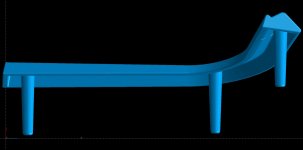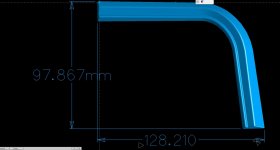Houndogforever
Hot Rolled
- Joined
- Oct 20, 2015
- Location
- Boring
I have a part. There are actually two of these, mirror images of each other.
The tapered pins on the back were the original die cast pins. I can replace them with a tapped hole, or just a threaded stud.
This is a Chrome highlight on a 1967 Skylark quarter panel extension.
I just have no idea how to hold and machine this part.




The tapered pins on the back were the original die cast pins. I can replace them with a tapped hole, or just a threaded stud.
This is a Chrome highlight on a 1967 Skylark quarter panel extension.
I just have no idea how to hold and machine this part.





